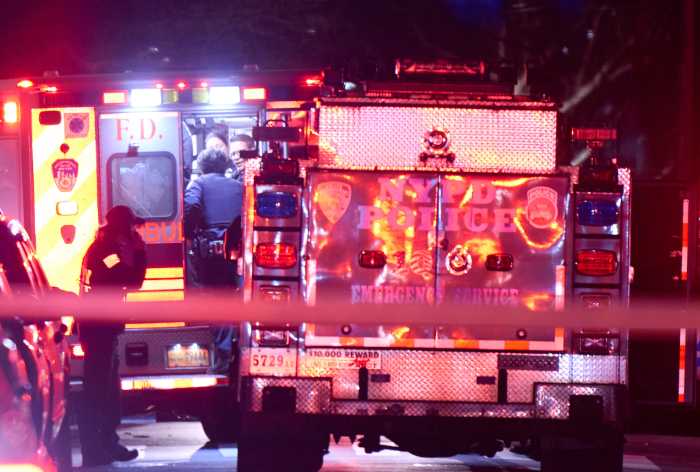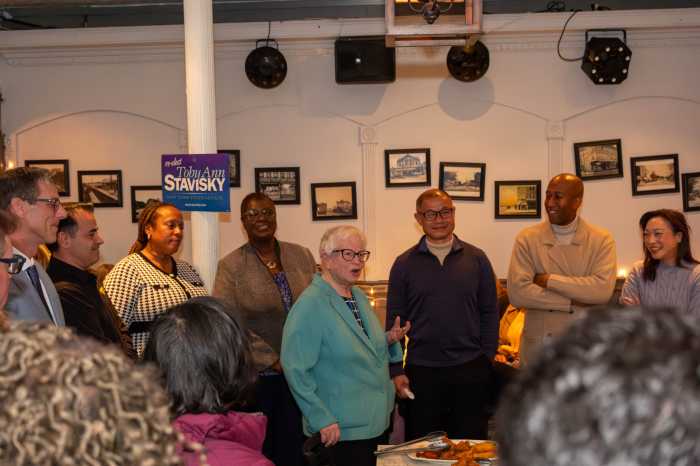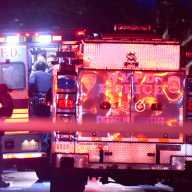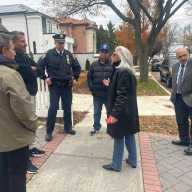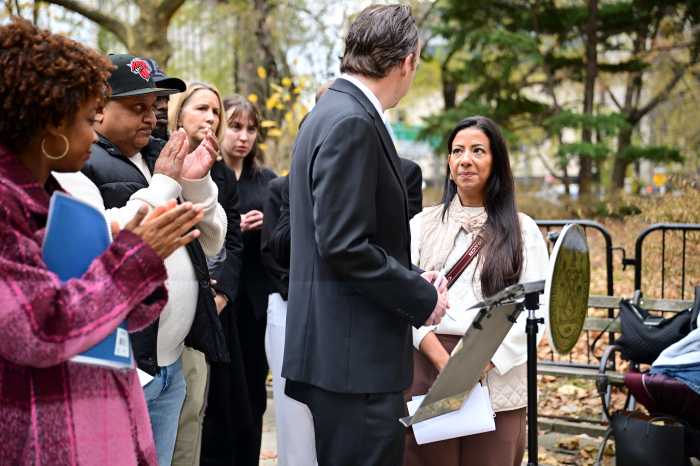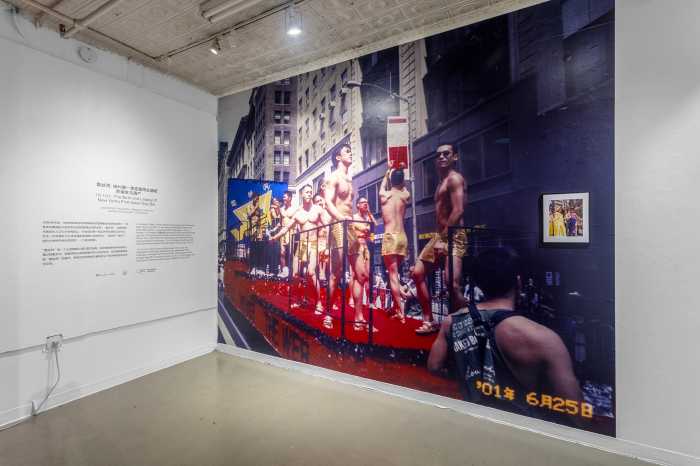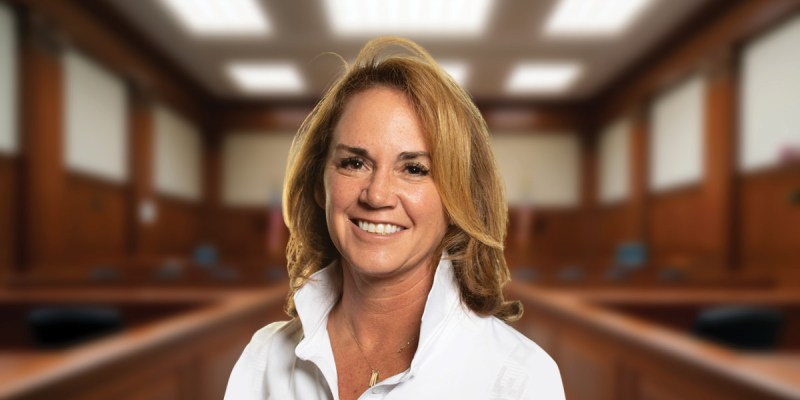Parents whose children are enrolled at P.S. 376 in Bayside are concerned about traffic safety around the school.
PTA co-president Carin Bail-Rosenfeld presented these concerns at the Bayside Hills Civic Association (BHCA) meeting on Jan. 29, citing a lack of a safety signal or crosswalk on 48th Avenue and 211th Street where cars and city buses frequently zoom past.
“I know that the location is a difficult location in terms of traffic because it is a roadway where public transportation runs — the public buses,” said Bail-Rosenfeld. “There is no safety signal in between Bell Boulevard and Oceania [Street] and it’s a straight run.”
She went on to say that there are times when the buses are not following the proper protocol by “going as high as 50 miles an hour” and cars go past parked yellow school buses with their stop signs out. A “concerned parent” on the BHCA Facebook page raised similar concerns about the school at 210-21 48th Ave.
“After petitions and much correspondence with Paul Vallone, Community Board 11 and Andrew Arcese of Nicole Garcia’s office, there is still no crosswalk,” said the parent. “The bus stop needs to be moved to its original site (same block but on [the] 210th side) so the crossing guard can cross the children and their parents safely.”
QNS reported on the city’s plans to build P.S. 376 back in 2015. Two years prior, residents in the area protested the school due to the potential impact on parking and “dangerous traffic problems” for the students. The school officially opened in September 2017 and currently teaches students in pre-K, kindergarten and first grade.
In 2017, Councilman Paul Vallone collaborated with P.S. 376 Principal Clara Kang and DOT to install signage that brought down the speed limit from 25 to 20 miles per hour during school hours. But parents think that more needs to be done.
Vallone told QNS that he had been advocating for “additional traffic calming measures and devices” at the school site even before it opened. The councilman said that his office has written “multiple letters” and walked through the site with DOT.
“As the school’s enrollment continues to grow in subsequent years, the traffic volume and concerns will also increase. It’s disappointing that our previous request for safety changes was denied,” said Vallone. “We have once again asked the DOT to reevaluate this issue and requested the addition of a traffic signal at 48th Avenue and 211th Street, as well as the addition of flashing lights to alert drivers to the existing slow zone around the school. The school has also collected over 200 petition signatures supporting these safety improvements. School safety is always a priority and I will continue advocating for a favorable resolution for the P.S. 376Q community.”
Andrew Arcese, a Department of Transportation (DOT) representative for the Queens Borough Commissioner’s office explained that when DOT conduct studies for signals or all-way stop signs, they follow federal guidelines listed in the Manual of Uniform Traffic Control Devices (MUTCD).
“They basically tell us when a signal or an all-way stop is warranted,” said Arcese who added that there are nine different criteria that can trigger a warrant.
Bail-Rosenfeld argued that the location of the school met two of the criteria but Arcese countered that the criteria are also largely based on the volume of vehicles and pedestrians that DOT observes.
Residents also raised concerns about the speeding buses that travel routes near the school and asked if DOT would consider installing a speed bump in the area. Prior to 2019, Arcese said that DOT’s policy was to not install speed reducers, such as speed bumps, in areas where heavy vehicles like buses or trucks pass.
But Arcese said that DOT piloted a program in Staten Island that they were looking to expand citywide, wherein “speed cushions” were installed on bus and truck routes. According to the DOT website, speed cushions are “rounded or flat-topped raised areas placed across the road with wheel cutouts designed to allow large vehicles, such as fire trucks and buses, to pass with minimal slowing or rocking.”
“They allow a bus or a truck to go through without necessarily going over that big bump, but passenger cars will still kinda have to go over that bump,” Arcese said.
In November 2018, Streetsblog reported that these speed cushions were not slowing down cars as intended and included several videos showing cars racing over the cushions.
QNS reached out to DOT and is awaiting a response.



